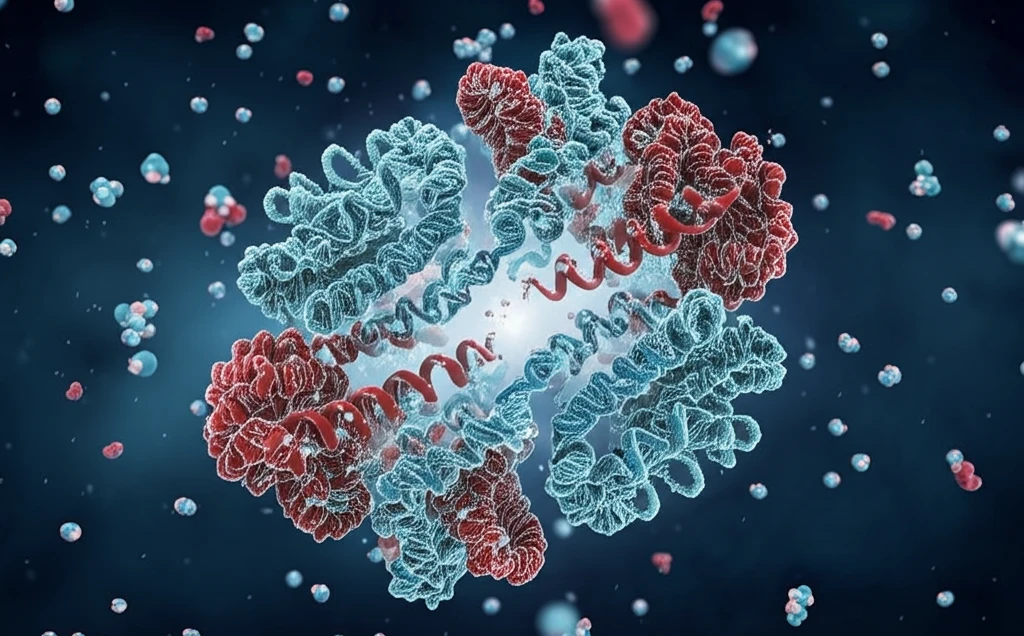
Decoding Calmodulin: How Understanding This Protein Could Unlock Better Health
"Researchers map the conformational landscape of calmodulin, revealing new insights into its function and potential therapeutic applications."
In the intricate dance of cellular life, proteins play the lead roles, orchestrating everything from muscle contraction to nerve signaling. Among these molecular maestros, calmodulin stands out as a versatile calcium-binding protein. It acts as a critical messenger, relaying calcium signals to trigger a cascade of downstream events. New research sheds light on calmodulin’s structural dynamics, potentially paving the way for innovative therapies.
Calmodulin's structure is unique, featuring two EF-lobes (N-lobe and C-lobe) that respond differently to calcium. Think of these lobes as specialized hands, each with its own grip and set of functions. While they share similarities, their subtle differences are key to calmodulin's diverse roles. Understanding these nuances is crucial for designing targeted interventions that harness calmodulin's power.
Imagine trying to understand a complex machine without a blueprint. That's the challenge scientists face when studying proteins. But what if you could map out every possible movement and interaction? Recent work has done just that for calmodulin, creating a 'conformational landscape' that reveals how its structure changes in response to calcium and other signals. This landscape is more than just a pretty picture; it's a roadmap for developing new drugs and therapies.
Mapping Calmodulin's Landscape: A New Perspective

The recent study by Kawasaki and Kretsinger delves into the conformational landscape of calmodulin, focusing on the differences between its N- and C-lobes. By analyzing the helix positions within these lobes, the researchers have created a detailed map of how calmodulin's structure shifts and changes. This approach uses a pseudo-two fold axis for alignment, allowing for a precise comparison of the lobes' structural dynamics.
- Calcium binding: Determines how calmodulin interacts with target proteins.
- Hydrophobic interactions: Crucial for calmodulin's stability and function.
- Structural changes: Influence calmodulin's activity and interactions.
- EF-hand dynamics: Dictate how calmodulin responds to calcium signals.
The Future of Calmodulin Research
By mapping calmodulin's conformational landscape, this research opens new avenues for understanding its role in health and disease. The detailed structural insights can be used to develop targeted therapies for a range of conditions, from heart disease to neurological disorders. As researchers continue to explore calmodulin's dynamic structure, we can expect even more innovative approaches to emerge, promising a healthier future.
